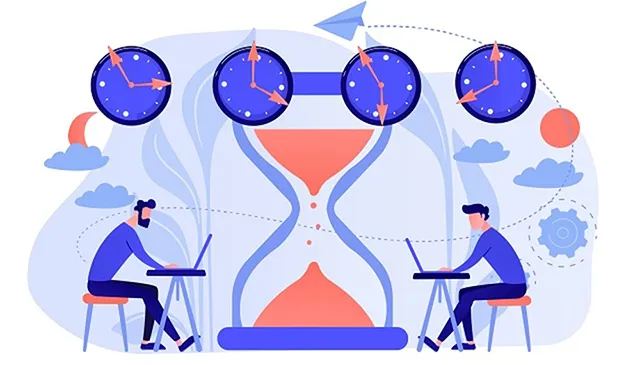
Menu

Menu

An effective job description (JD) sets the base for recruiting, developing and retaining the best talent. It also creates an optimum framework for future work performance by clarifying responsibilities, expected results, and success measurements.
Job descriptions play a role in supporting a fair and transparent compensation system and form a foundation for legal compliance.
We have created an A-Z list of elements to consider when building job descriptions. The list is not presented in any particular order and is not exhaustive, but it will help you to develop and maintain effective job descriptions:
Your JD must grasp potential job seekers’ attention quickly and positively to encourage qualified candidates to apply for the role. To do this, the JD needs to be well-presented, comprehensive, but also concise.
The benefits associated with a role increase the organisation’s employee value proposition and can sway a candidate to apply.

To recruit the right fit for your team, the JD must accurately convey the organisation’s culture in the document style, content, and language used.
It’s good practice to include a brief statement on what you hope the incumbent will achieve in the role. Look at having one month, three months, six months and one-year targets that describe what they will own and be responsible for and what success will look like at these milestones.
When composing a new JD or updating an existing one, input from employees already in the role is invaluable. Taking on board their views makes the resulting JD more accurate and reflective of the workplace.
Another critical element to include in a JD is a summary of any essential experience for the new employee to succeed. Experience is often over-stated and can dissuade potential candidates from applying. Take care to make the experience requirement realistic for the role; for example, do not ask for 5-years’ experience for an entry-level position.
Try to ensure that you allow enough flexibility in the responsibilities for the role to grow and develop over time; being too restrictive may give potential candidates a sense of an organisation that does not allow for innovation and personal growth.
Avoid gender-specific language. Avoid using “he/she”, and when you describe your ideal candidate, use gender-neutral pronouns in statements such as “you will ……”, giving a more direct and personalised impression.

It is useful to provide a concise history of the company. Some candidates may be looking for a new start-up environment, for example, while others will want an organisation with long-term experience in the marketplace.
Consider carefully the language used in a JD to minimise any biases and promote inclusivity. Some words tend to be more associated with male-dominated culture, and others with female; for example, language such as “dominate” or “work hard, play hard” give a male connotation. Language choices can also suggest other biases, such as age, race or religion.
Consider demonstrating your inclusivity strategy with a standard phrase in the JD, such as “We strongly encourage applications from underrepresented groups”.
Make sure to focus the JD on the job role. This may sound basic, but it’s surprising how many JDs start to “creep” into supervisor or team member responsibilities. Carefully review JDs to ensure no significant overlap with other functions or that responsibilities fall outside of the position’s remit.
Describe the knowledge that the candidate should possess to be able to carry out the role. This knowledge requirement, like the experience, should be realistic and specific for the position.
It is important to include the location for the role, travel requirements, and an indication of expectations for remote working.

Include details of how performance will be measured using specific targets. Ideally, use a SMART or FAST framework to describe the key goals and measurement metrics used.
Remove any “nice to have” requirements. Ask yourself whether the requirements listed are indispensable to getting the job done. Challenge your hiring managers to define which screening qualifications are critical, which skills are flexible, and which can be learned on the job.
When writing your JDs, keep your language and content concise, to the point and as clear and readable as possible.
Ensure that you include the purpose of the role. Candidates need to see how the role contributes to the overall direction and success of the organisation.
As with the knowledge, skills and experience, include only those qualifications required to do the job. Too many job vacancies have JDs that specify vague qualifications, or conversely, are so specific that it considerably narrows down who is eligible to apply.
Remember to keep the responsibilities concise, clear and focused. Include the reporting line, preferably as an extract of the structure chart, so that the potential candidate gets a sense of how the role fits in the organisation.

Including a salary range in your JD lets potential candidates know that you’re committed to equity and fair pay. Open disclosure of salary ranges allows potential candidates to self-screen rather than apply for roles and withdraw at a later stage.
Job titles should reflect the role clearly and unambiguously. JDs with generic titles or ones that don’t reflect the listed scope and responsibilities can look unprofessional. It is good to be creative with the JD, but not so good to be creative with the job title to the extent that it is hard to understand what the job entails.
Remember to review and update your JDs regularly to keep pace with how roles develop in your organisation.
The JD should be presented professionally in terms of layout as well as the content. Consider elements such as fonts, colours, branding, readability and grammar.
Be clear about working hours and days expected in the role, including across standard weekends. Another related point to consider is your company policy on being available “on-demand”; for example, do you expect the role holder to be available in their personal time to answer emails and calls?

Try to highlight any unique differentiators in the role that make it stand out from the competition.
Add the date range for applications to be made when posting a JD online for vacancies. Ensure that your JDs also have version control with a creation date you can refer to when maintaining the contents.
Be zealous when creating, reviewing and amending your JDs to ensure that they project the organisation and the role in the best way possible and therefore attract the quality of candidate you require to build your teams.
Continuous improvement is essential in the recruitment process. Regularly revisiting and refining job descriptions helps organizations adapt to changing needs and market conditions. In today’s fast-paced environment, roles can shift quickly, making it crucial for job descriptions to remain relevant. By soliciting feedback from hiring managers and employees, companies can identify areas for enhancement and ensure their job descriptions accurately reflect current roles. Moreover, this feedback loop encourages collaboration across teams, fostering a sense of ownership and accountability. Additionally, incorporating new trends in the industry can help attract top talent who are looking for innovative and forward-thinking employers. For example, the rise of remote work has necessitated the inclusion of flexible working arrangements in job descriptions, which can significantly widen the pool of candidates. Thus, maintaining an iterative approach to job descriptions not only enhances clarity but also aligns the organization’s goals with talent acquisition strategies.
Diversity and inclusion are vital considerations in today’s workforce. Organizations should actively promote their commitment to these values within job descriptions. This approach not only attracts a broader range of applicants but also demonstrates the company’s dedication to creating an equitable workplace. Furthermore, fostering diversity can lead to a more dynamic and innovative team, as diverse perspectives often yield creative solutions to complex problems. Including statements that encourage diverse applicants to apply can enhance the organization’s reputation and appeal. Additionally, showcasing specific initiatives or programs that support diversity within the company can further reassure candidates of the organization’s commitment. Moreover, fostering a diverse environment leads to greater creativity and innovation, as different perspectives contribute to a more dynamic workplace. Ultimately, emphasizing diversity and inclusion not only enriches the workplace but also enhances overall organizational performance.
Leveraging technology can greatly enhance the effectiveness of job descriptions. Tools like applicant tracking systems (ATS) can streamline the process of creating and managing job descriptions. Moreover, technology can help ensure that job descriptions are easily searchable and visible to potential candidates, increasing the likelihood of attracting qualified applicants. Additionally, utilizing AI-driven software can help analyze job descriptions for bias and suggest improvements. By automating certain aspects of job description management, organizations can save time and ensure that their listings are optimized for both search engines and potential candidates. Furthermore, technology can provide valuable analytics on how job descriptions perform in attracting applicants, enabling continuous refinement based on data-driven insights. Consequently, integrating technology into job description management not only enhances efficiency but also improves the overall quality of recruitment efforts.
Employer branding plays a crucial role in attracting top talent. Job descriptions should reflect the organization’s brand identity and values, allowing candidates to gauge whether they align with the company’s mission. By showcasing the organization’s unique culture, potential candidates can visualize themselves within the team. Crafting job descriptions that highlight the organization’s unique culture and work environment can significantly enhance its appeal. For instance, sharing testimonials from current employees about their experiences can create a more compelling narrative. Furthermore, showcasing company achievements, such as awards or recognitions, can further entice potential candidates, as they are more likely to apply to organizations that align with their values. Additionally, including information about career growth opportunities and professional development can further strengthen the employer brand. Therefore, a strong employer brand conveyed through job descriptions not only attracts candidates but also fosters long-term loyalty among employees.
Implementing feedback mechanisms is vital for refining job descriptions over time. Organizations can encourage feedback from applicants and new hires regarding the accuracy and clarity of job descriptions. This practice not only helps identify potential areas for improvement but also demonstrates to candidates that their opinions are valued. Additionally, conducting periodic reviews with hiring managers and teams can ensure that job descriptions remain relevant and reflective of the roles as they evolve. This collaborative approach not only enhances the quality of job descriptions but also promotes a culture of continuous improvement within the organization. Moreover, considering the changing landscape of work, incorporating real-time feedback can further enhance the recruitment process. By fostering a culture of continuous feedback, organizations can enhance their recruitment processes and improve candidate experiences. Ultimately, this commitment to improvement strengthens the organization’s overall effectiveness in talent acquisition.
Aligning job descriptions with the organization’s overarching goals is crucial for attracting the right talent. When job descriptions reflect the strategic direction of the company, they not only clarify expectations for candidates but also reinforce the company’s mission and values. By incorporating specific objectives that align with the organization’s goals, potential candidates can understand how their contributions will impact the larger picture. Furthermore, this alignment encourages prospective employees to see themselves as integral parts of the team, motivating them to apply. Regularly reviewing job descriptions in light of evolving organizational goals ensures that they remain relevant and compelling. As a result, candidates are more likely to be engaged and enthusiastic about their potential roles, which can lead to higher retention rates once they are hired. Ultimately, a well-aligned job description serves as a guiding light for both candidates and the organization, fostering a mutual understanding of expectations.
Clear communication is essential in crafting effective job descriptions. A well-written job description provides candidates with a comprehensive understanding of the role, responsibilities, and expectations, which can significantly influence their decision to apply. To achieve this clarity, organizations should use straightforward language and avoid jargon that may confuse potential applicants. Additionally, breaking down information into digestible sections with bullet points can enhance readability and make key details stand out. Moreover, utilizing consistent formatting and organization helps candidates quickly find the information they seek. By prioritizing clear communication, organizations not only attract more qualified candidates but also set a positive tone for future interactions. Clear communication in job descriptions ultimately fosters a transparent and welcoming environment, which can enhance the overall candidate experience and build trust from the outset.
A collaborative approach to creating job descriptions can yield significant benefits for organizations. Involving team members, hiring managers, and current employees in the drafting process can provide valuable insights into the nuances of the role. This collaboration ensures that job descriptions accurately reflect the responsibilities and expectations of the position. Furthermore, gathering input from various stakeholders can help identify key skills and attributes that may not have been initially considered. This comprehensive perspective enhances the quality and accuracy of the job description. Additionally, fostering collaboration can promote buy-in from team members, making them more invested in the recruitment process. By leveraging collective expertise, organizations can create job descriptions that not only attract top talent but also resonate with the team culture, thereby facilitating a smoother onboarding process for new hires.
Staying updated on industry trends is essential when crafting job descriptions. By incorporating relevant trends and skills, organizations can position themselves as leaders in their respective fields. Candidates often seek opportunities that align with current industry developments, making it imperative for job descriptions to reflect these changes. Additionally, mentioning emerging technologies or methodologies relevant to the role can attract candidates eager to contribute to innovative projects. Furthermore, highlighting industry certifications or standards in job descriptions can enhance the organization’s credibility and appeal. This proactive approach not only showcases the organization’s commitment to staying ahead of the curve but also attracts candidates who are passionate about professional growth. Consequently, by integrating industry trends into job descriptions, organizations can enhance their attractiveness and ensure they remain competitive in the talent market.
An engaging application process is essential for attracting and retaining top talent. Candidates often judge an organization based on their initial interactions, so it’s vital to create a seamless and user-friendly application experience. To facilitate this, organizations should provide clear instructions on how to apply and what to expect throughout the process. Additionally, offering multiple application channels, such as online forms and email submissions, can accommodate different candidate preferences. Moreover, maintaining regular communication with applicants, such as sending acknowledgment emails and providing updates on their application status, can enhance their overall experience. By prioritizing engagement, organizations demonstrate respect for candidates’ time and efforts, which can lead to a more positive perception of the company. Ultimately, a well-designed application process fosters goodwill and encourages candidates to see the organization as a desirable place to work.
Leveraging feedback for future job descriptions is a vital step in the continuous improvement process. After the hiring process concludes, organizations should seek input from both successful and unsuccessful candidates regarding the clarity and relevance of the job description. This feedback can uncover potential gaps or areas for enhancement, ensuring that future job descriptions are more effective. For instance, candidates may highlight ambiguous language or missing details that could better define the role.
Additionally, conducting debrief sessions with hiring managers can provide insights into what worked well and what could be improved in the description. These discussions can reveal whether the expectations set forth in the job description matched the actual requirements of the role. By adopting a proactive stance on feedback, organizations can foster a culture of learning and adaptability.
Moreover, establishing a regular review cycle for job descriptions can help ensure they remain relevant in a rapidly changing job market. This commitment to refinement not only enhances the quality of job descriptions but also contributes to a more efficient recruitment process. Ultimately, utilizing feedback as a tool for growth can lead to more accurate and compelling job descriptions that attract the right candidates. Consequently, organizations that prioritize feedback create a more engaged workforce, as candidates appreciate being heard and valued throughout the recruitment process.
Read about Employee Onboarding.
Contact us at HRBluSky to explore how we can support you in your recruitment strategy.
Alignment
Article
Audit
Automation
Benefits
Candidate
Communication
Compliance
Digitalisation
Digital Technology
Diversity
Emirates Id Application
Employee Experience
ESS
Feedback
Health and Safety
HRMS
HR Strategy
HR System UAE
Human Resource Management
Human Resource Management Systems
Job Roles
Learning and Development
Onboarding
Outsource
Payroll
Payroll Management System
Payroll Processing
Performance
Performance Management
Personalisation
Recruit
Recruiting
Recruitment
Remote Working
Rewards
Security
Service Providers
Skills
Smart
Survey
Virtual
Visa Cancellation
Work Environment
Workforce
© 2026 Pruvity HR Solutions Pvt Ltd, Madurai, India